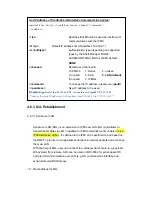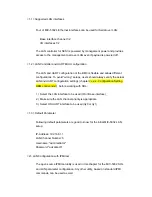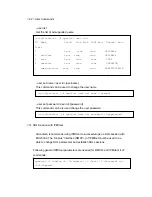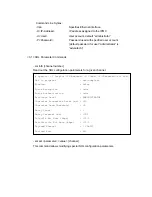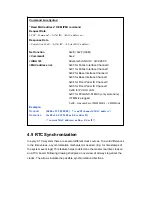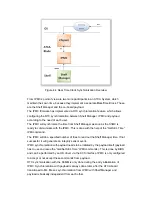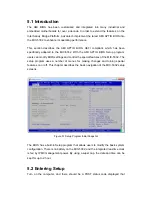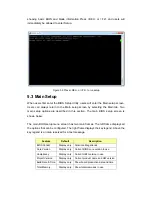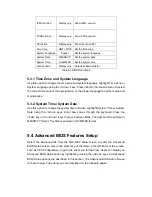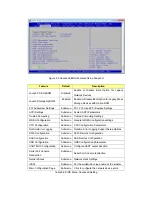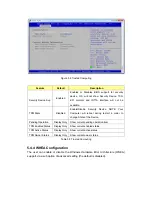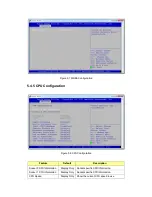
Figure 4.4 Real Time Clock Synchronization Overview
From IPMC’s point of view are two more participants in an ATCA System, which
maintain their own time, because they implement a separate
R
eal-
T
ime-
C
lock. These
are the Shelf Manager and the on-board payload.
The IPMC firmware has implemented a RTC synchronization feature, which allows
configuring the RTC synchronization between Shelf Manager, IPMC and payload
according to the need of each user.
The IPMC will synchronize the time from Shelf Manager as soon as the ShMC is
ready to communicate with the IPMC. This is done with the help of the “Get SEL Time”
IPMI command.
The IPMC will do a specified number of tries to read out the Shelf Manager time. If not
successful, it will generate an integrity sensor event.
IPMC synchronization with payload needs to be initiated by the payload itself (payload
has to use and issue the “Get/Set SEL Time” IPMI commands). This is done by BIOS
and can be performed by an OS driver via the KCS interface. IPMC is only configured
to accept or not accept these commands from payload.
RTC synchronization with the ShMM is only done during the early initialization of
IPMC. Synchronization with payload is always done later, after the ATCA board
transitioned to M4. Means synchronization from IPMC with Shelf Manager and
payload is basically independent from each other.
Summary of Contents for MIC-5332
Page 7: ...This page is left blank intentionally ...
Page 10: ...Chapter 1 Product Overview This chapter briefly describes the MIC 5332 ...
Page 15: ...Chapter 2 Board Features This chapter describes the MIC 5332 hardware features ...
Page 43: ...Figure 3 10 Jumper Locations JP1 JP5 JP6 ...
Page 44: ...Chapter 4 Hardware Management This chapter describes the IPMC firmware features ...
Page 105: ... root localhost ipmitool raw 0x2E 0x40 0x39 0x28 0x00 0x03 0x01 section ...
Page 108: ...Appendix A IPMI PICMG Command Subset Supported by IPMC ...
Page 120: ...33 48V_A 48V input feed A 34 48V_B 48V input feed B ...







